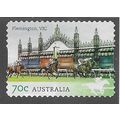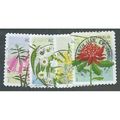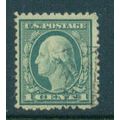Grant, Duncan - North African vase (back) - art postcard
- Condition : Used
- Dispatch : 2 Days
- Brand : None
- ID# : 200512138
- Quantity : 1 item
- Views : 256
- Location : United Kingdom

- Seller : justthebook (+1699)
- Barcode : None
- Start : Sat 24 Apr 2021 05:36:26 (EDT)
- Close : Run Until Sold
- Remain : Run Until Sold
Checks/Cheques
 for 1 item(s) edit
for 1 item(s) edit
Shipping Calculator
More Listings from This Seller view all
Seller's Description
- Art Postcard
- Work of art title: North African Vase (back)
- Artist (if known): Duncan Grant (1885-1978)
- Media or other details: vase
- Publisher / Gallery: Charleston Trust, Lewes, Sussex
- Postally used: no
- Stamp & postmark details (if relevant):
- Size: Modern
- Notes & condition details:
NOTES:
Size: 'Modern' is usually around 6in x 4in or larger / 'Old Standard' is usually around 5½in x 3½in. Larger sizes mentioned, but if you need to know the exact size please ask as this can vary.
All postcards are not totally new and are pre-owned. It's inevitable that older cards may show signs of ageing and use, particularly if sent through the post. Any faults other than normal ageing are noted.
Stock No.: A1190
Please ask if you need any other information and I will do the best I can to answer.
------------------------------------------------
Postage and packing charge should be showing for your location (contact if not sure).
UK - PayPal, Cheque (from UK bank) or postal order
I will give a full refund if you are not fully satisfied with the postcard.
----------------------------------------------
Duncan James Corrowr Grant (21 January 1885 – 8 May 1978) was a British painter and designer of textiles, pottery, theatre sets and costumes. He was a member of the Bloomsbury Group.
His father was Bartle Grant, a "poverty-stricken" major in the army, and much of his early childhood was spent in India and Burma. He was a grandson of Sir John Peter Grant, 12th Laird of Rothiemurchus, KCB, GCMG, sometime Lieutenant-Governor of Bengal.[1] Grant was also the first cousin twice removed of John Grant, 13th Earl of Dysart (b. 1946).
Childhood
Grant was born on 21 January 1885 to Major Bartle Grant and Ethel Isabel McNeil in Rothiemurchus, Aviemore, Scotland.[2][3][4] Between 1887 and 1894 the family lived in India and Burma, returning to England every two years. During this period Grant was educated by his governess, Alice Bates.[5] Along with Rupert Brooke, Grant attended Hillbrow School, Rugby, 1894–99, where he received lessons from an art teacher and became interested in Japanese prints.[5] During this period Grant spent his school holidays at Hogarth House, Chiswick, with his grandmother, Lady Grant.[5] He attended St Paul's School, London (as a boarder for two terms), 1899-1901, where he was awarded several art prizes.[5]
Art education and European influence
From about 1899/1900 to 1906 Grant lived with his aunt and uncle, Sir Richard and Lady Strachey and their children. When Grant was younger, he accompanied Lady Strachey to "picture Sunday" which gave him the opportunity to meet with eminent painters. Lady Strachey was able to persuade Grant's parents that he should be allowed to pursue an education in art.[5] In 1902 Grant was enrolled by his aunt at Westminster School of Art; he attended for the next three years.[2] While at Westminster, Grant was encouraged in his studies by Simon Bussy, a French painter and lifelong friend of Matisse, who went on to marry Dorothy Strachey.[5]
In the winter of 1904–5 Grant visited Italy where, commissioned by Harry Strachey, he made copies of part of the Masaccio frescoes in the Brancacci Chapel, in the Church of Santa Maria del Carmine, Florence.[5] Grant also made a study of the Portrait of Federigo da Montefeltro, one half of the diptych by Piero della Francesca in the Uffizi and was greatly impressed by the frescoes of Piero in the Basilica of San Francesco, Arezzo.[5] On his return, at the advice of Simon Bussy, Grant made a copy of the Angel musicians in Piero's Nativity in the National Gallery, London.[5]
Lady Ottoline Morrell (1873–1938), vintage snapshot print/NPG Ax141298. Jean de Menasce; Vanessa Bell (née Stephen); Duncan Grant; Eric Siepmann, 1922
Grant was introduced to Vanessa Bell (then Vanessa Stephen) by Pippa Strachey at the Friday Club in the autumn of 1905.[5] From 1906, thanks to a gift of £100 from an aunt, Grant spent a year in Paris studying at the Académie de La Palette, Jacques-Émile Blanche's school.[5] During this period he visited the Musée du Luxembourg and saw, among other paintings, the Caillebotte bequest of French Impressionists.[5]
In January 1907, and again in the summer of 1908, Grant spent a term at the Slade School of Art.[6] In 1908, Grant painted a portrait of John Maynard Keynes, who he had met the previous year, while the two were on holiday in Orkney.[5] A year later, the pair would share rooms on Belgrave Road.[6]
In 1909 Grant visited Michael and Gertrude Stein in Paris and saw their collection that included paintings by, among others, Picasso and Matisse.[5] In the summer, with an introduction from Simon Bussy, Grant visited Matisse himself, then living at Clamart, Paris.[5][6]
Duncan Grant in London
Duncan Grant and John Maynard Keynes photographed facing each other c.1913.
Duncan Grant and John Maynard Keynes c. 1913.
Bloomsbury Foundations
In November 1909, Grant moved to 21 Fitzroy Square, where he occupied two rooms on the second floor of the building on the west side of the square.[7] A few doors away, at 29 Fitzroy Square, lived Adrian and Virginia Stephen (later Virginia Woolf). Grant would later recall; 'a close friendship sprang up between Adrian Stephen and myself and I had only to tap on the window to be let in. The maid told Virginia "that Mr Grant gets in everywhere". But very irregular as my visits were, they became more and more a habit, and I think they soon became frequent enough to escape notice.'[7]
In June 1910 Grant exhibited with the Friday Club at the Alpine Club Gallery.[6] Later that year Grant would visit Roger Fry's Manet and the Post-Impressionists exhibition at the Grafton Galleries in Mayfair, which included work by the likes of Gauguin, Matisse and Van Gogh, where he was said to be particularly interested in the paintings of Paul Cézanne.[6]
During the summer of 1911 Grant was invited by Roger Fry to contribute to the redecoration of the dining room at the Borough Polytechnic (now London South Bank University).[6][8] Grant composed two oil paintings to fit with the theme of illustrating London on Holiday. Both his paintings, Football and Bathing, bear the influence of early Italian art and Byzantine mosaics.[6] Grant also drew on his exposure to the work of the post-impressionists; The Times reported of his depiction of the figures that 'Mr Grant has used all his remarkable powers of draughtsmanship to represent the act of swimming rather than any individual swimmers.’[9]
Listing Information
| Listing Type | Gallery Listing |
| Listing ID# | 200512138 |
| Start Time | Sat 24 Apr 2021 05:36:26 (EDT) |
| Close Time | Run Until Sold |
| Starting Bid | Fixed Price (no bidding) |
| Item Condition | Used |
| Bids | 0 |
| Views | 256 |
| Dispatch Time | 2 Days |
| Quantity | 1 |
| Location | United Kingdom |
| Auto Extend | No |














